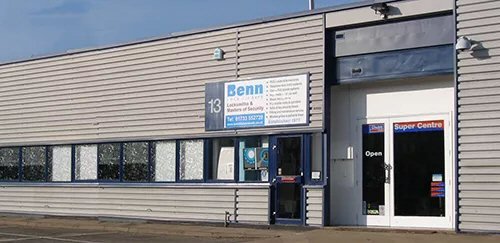A History of padlocks.
A History of padlocks.
A History of padlocks. Whoever has tried to pick an old combination lock or padlock knows that it is a bit more complicated than you might expect. Behind every lock and key is a story of evolution. Although padlocks are widely used today, they were a staple in the Roman Empire and remained so for many centuries afterwards. Where did the padlock come from?
Origin of the Roman padlock.
The oldest padlocks known to archaeologists and historians date from around 500 BC by the Romans. The iron padlocks were fitted with a bolt and operated with a key. The most common Roman padlock consisted of two pieces: a rectangular body and a separate protective spring. The key to the lock was very simple. A flat, rectangular piece of metal was bent at a 90-degree angle. At the end was a small hole big enough to operate the corresponding lock spring and open the lock.
Locks date back to the time of the Roman Empire. These locks were rounded and had a size of about four by six centimetres. The lock was opened and closed with the help of a key. These locks had a chain instead of the shackle that is common today. More modern Roman locks consisted of two parts: a rectangular body attached to a metal post. The shackle of this lock had a protective spring made of a piece of metal in the shape of a ‘v’.
Patent for a shackle and a v-shaped spring.
Patent for a new and improved lock. This design is for “providing a padlock having a two-part locking bolt, each part of which has a separate and independent action and is operated by different means, each unlocking device being guided by a scale. Construction and arrangement of the parts of a padlock with a key so that the combination by which it is operated can be easily and quickly changed and provision of the key with a simple movable index can be approached. Indicate the appropriate point to which the key must be turned in order to operate the padlock successfully”
Locks are mechanical or electronic locking devices that are opened by a physical key (Metal key, digital card, etc.), or by a combination of both, or can only be opened from one side, such as a door chain. A key is an item that can be used to operate a lock (to lock or unlock it). A key is a small metal piece consisting of two parts: the bit or blade that fits into the lock’s keyway and identifies different keys, and the piece that protrudes to allow the user to turn it. At its simplest, a key operates a lock or set of locks that share the same key, a lock/key system in which each lock with a similar key requires the same unique key.
It is likely that ancient traders relied heavily on padlocks at some point in their lives. Affordable and portable, padlocks are an ingenious invention, useful for medium security or even for secure expressions of love. In general, they are indispensable. The history of padlocks is long for a reason. But what’s really inside padlocks is a bit of a mystery, isn’t it?
They’re basically these mysterious metal boxes that can’t be opened easily. How do they work and how are they made? To answer this question, we need to look at how padlocks are made and what goes into making them. We need to look at what is in padlocks, what parts are involved in the process and how they work. What is in padlocks?
A History of padlocks
Padlocks have been used as symbols of love. Ponte Milvio, the historic bridge in Rome, has them, as does the Pont des Arts in Paris. The observation tower on Namsan Mountain in Seoul is completely covered in padlocks, and the fact that Huangshan Mountain in China is a Unesco World Heritage Site does not mean it is immune to the weight of love.
Padlocks are popping up in clusters all over the world, thanks to young couples who put padlocks on bridges and lookouts and throw the keys over the edge. Part graffiti, part initials carved into a tree, it’s the latest way for romantics to declare their love forever. The origins of the padlock as a romantic gesture are unclear (some say it began in Asia, others in Europe). But while there is no consensus on exactly how it originated, padlocks have a deep-rooted history as symbols of fidelity and love.
Padlocks were used by the ancient Romans, Greeks, Egyptians, Chinese and other ancient civilisations. It is believed that padlocks were created to protect the belongings of travellers when they were on the road. Today, padlocks are used to protect homes, property and valuables in London and around the world. History says that the design of today’s padlock was patented by Harry Soref in 1924 after he founded the Master Lock Company in 1921.
Padlocks are a means of protecting travellers’ belongings when they are on the move.
Padlocks are portable locks with a shackle that can be passed through an opening (such as a chain link or clip) to prevent wear, theft, vandalism or damage. The term padlock dates from the late 15th century. The prefix pad- is of unknown origin; it is combined with the noun lock, from Old English loc, cognate with German loch, “hole”.
Padlocks existed in Roman times, between 500 BC and 300 AD. They were known early on by traders travelling the ancient trade routes to Asia, including China. Padlocks were used in Europe from the Middle Ages onwards and later spread to the Roman world and beyond. Roman padlocks had an extended curved bar attached to the case and a shorter piece that could be inserted into the case.
American smokehouse locks are very common, but they are important early locks in the history of American industry. Numerous American manufacturers produced these padlocks. In the mid-19th century, the American manufacturing industry was booming and ironmongers produced a variety of items, and the smokehouse padlock was a regular American item at the time.
The smokehouse-style padlock consists of two steel plates with a simple flat key. The interior of the padlock consists of guards to protect against theft and multiple levers that lock the shackle. The shackle is usually a flattened round bar with notches on one side for engaging the levers and a hole on the opposite side for opening or closing.
A History of padlocks
Even if your keyed alike padlocks don’t provide significant security, you probably don’t want to spend the time and money to replace them. To ensure that your padlocks don’t wear out due to the elements, you can invest in a weatherproofing device. The most proven form of weatherproofing in the history of padlocks is a key cover.
Even if your padlock is made of stainless steel or other corrosion-resistant metals, dirt and dust can clog the keyway over time. Closing the keyway can cause moisture to accumulate in the padlock if there is no drainage hole in the padlock housing. If you do not want to make the initial investment in padlocks with keys and equal weather resistance, you will need to invest in lock maintenance.
Before you look up how to remove a broken padlock, you should know how to lubricate a padlock properly. Sometimes this is enough to remove the rust that is blocking the padlock. All through the history of padlocks, lubricating and cleaning have been of great importance as they are exposed to the elements.
To lubricate a particular padlock, you should know the following: Apply the lubricant to the body of the padlock through the shackle holes. Shake the shackle and wiggle the padlock to allow the lubricant to penetrate the body of the lock. For difficult locks, apply lubricant to the drain hole and any existing crevices.
Padlocks are often used to lock the doors of houses or fences. The use of this padlock is to prevent something bad from happening, such as theft or loss of valuables. The padlock itself is a mechanism that usually consists of a u-shaped metal bar with a keyhole at one end of the link. As far as we know from history, the padlock is the oldest security device in the world. It has been around since Roman times. Today there are many different types of padlocks on the market. Of course, each padlock has a different way of keeping people out.
Benn Lock and Safe Ltd now offer a rapid response emergency locksmith service in Peterborough, Stamford and Huntingdon as far as 45 miles from PE1 – Monday to Friday 8:30 am to 5:00 pm.
Fast Response Time Guaranteed on (01733) 55 27 28
#bennlockandsafeltd #locksmithspeterborough #emergencylocksmiths #AHistoryofpadlocks
The post A History of padlocks. first appeared on The Marketing Tutor.
The post A History of padlocks. first appeared on Habazar Internet marketing.






